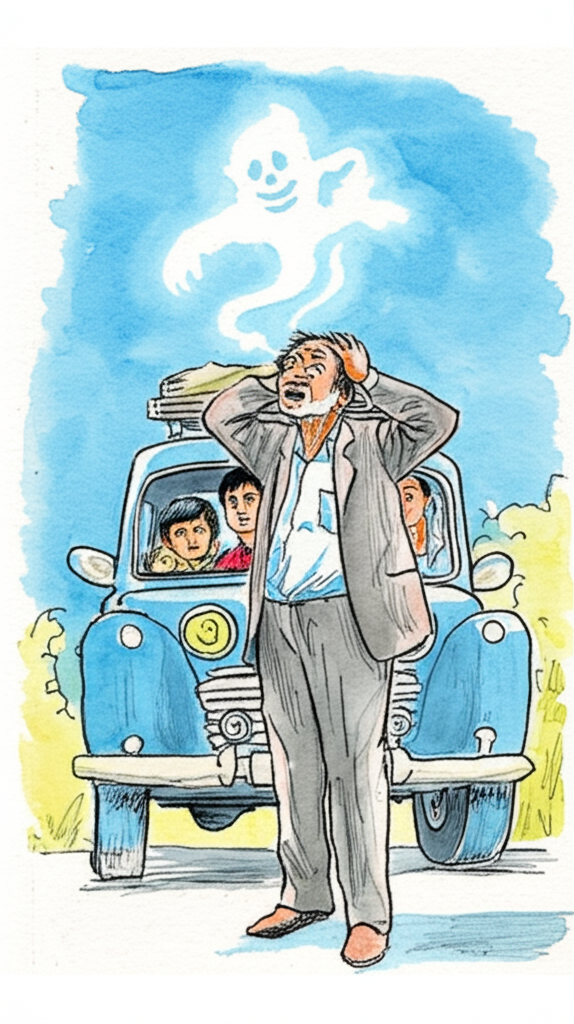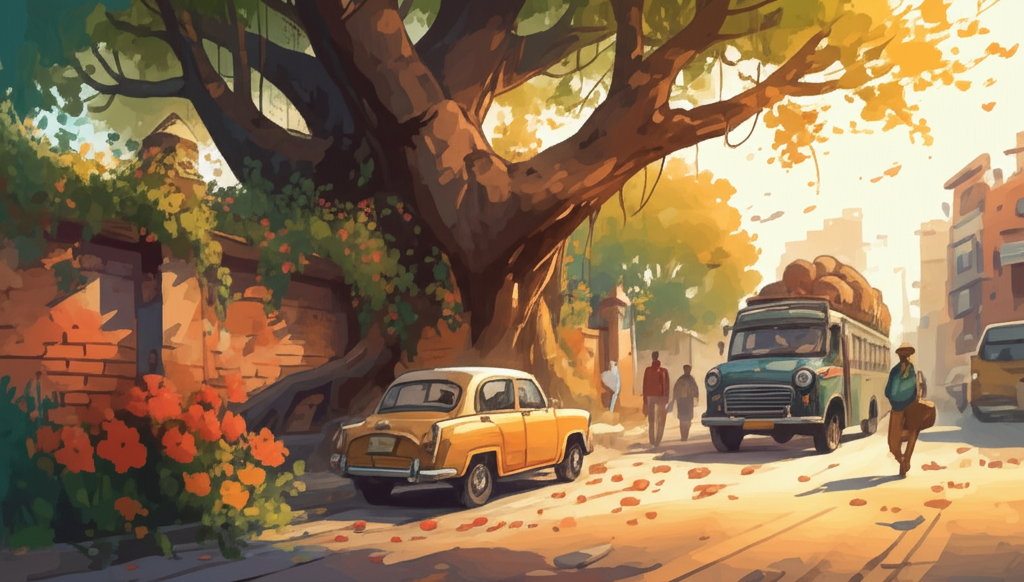
Grandmother decided we had to move to a new house. It was all because of a silly ghost who was making life super annoying for everyone!
In India, these ghosts usually live in peepul trees. Our ghost first lived in the branches of a really old peepul tree. It had grown right through the wall around our yard and spread into our garden on one side, and over the road on the other.
For many years, the ghost lived there happily, without bothering us. I guess all the cars and trucks on the road kept him busy. Sometimes, when a horse-drawn cart went by, he would scare the pony. Then the little cart would wobble off the road! Sometimes he would sneak into a car or bus engine, and it would break down soon after. And he liked to knock hats off people’s heads. They would get mad and wonder why a breeze suddenly blew up, then stopped right away. Even though the ghost could make us feel him and sometimes hear him, we couldn’t see him.
At night, people didn’t walk under the peepul tree. They said if you yawned under it, the ghost would jump down your throat and mess up your tummy! Grandmother’s tailor, Jaspal, who was always late with her clothes, blamed the ghost for everything. Once, when Jaspal yawned, he forgot to snap his fingers in front of his mouth. You always have to do that under peepul trees! The ghost jumped right in. Ever since, Jaspal had tummy troubles.
But he hadn’t bothered our family until one day, the peepul tree was cut down. It wasn’t really anyone’s fault, except Grandfather let the road workers cut down the tree on our land. They wanted to make the road wider, and the tree was in the way. So the tree and part of the wall had to go. Well, even a ghost can’t win against road workers! But the very next day, we found out the ghost, without his tree, had moved into our house! And since a good ghost has to be bad to be a ghost, he started causing all sorts of trouble.
First, he hid Grandmother’s glasses whenever she took them off. ‘I know I put them on the table,’ she’d grumble. Then we’d find them balanced on the nose of a stuffed wild boar that hung on the wall! I was the only kid in the house, so I got blamed at first. But a day or two later, the glasses vanished again, only to be found hanging from the parrot’s cage! Everyone agreed someone else, a ghost maybe, was doing it.
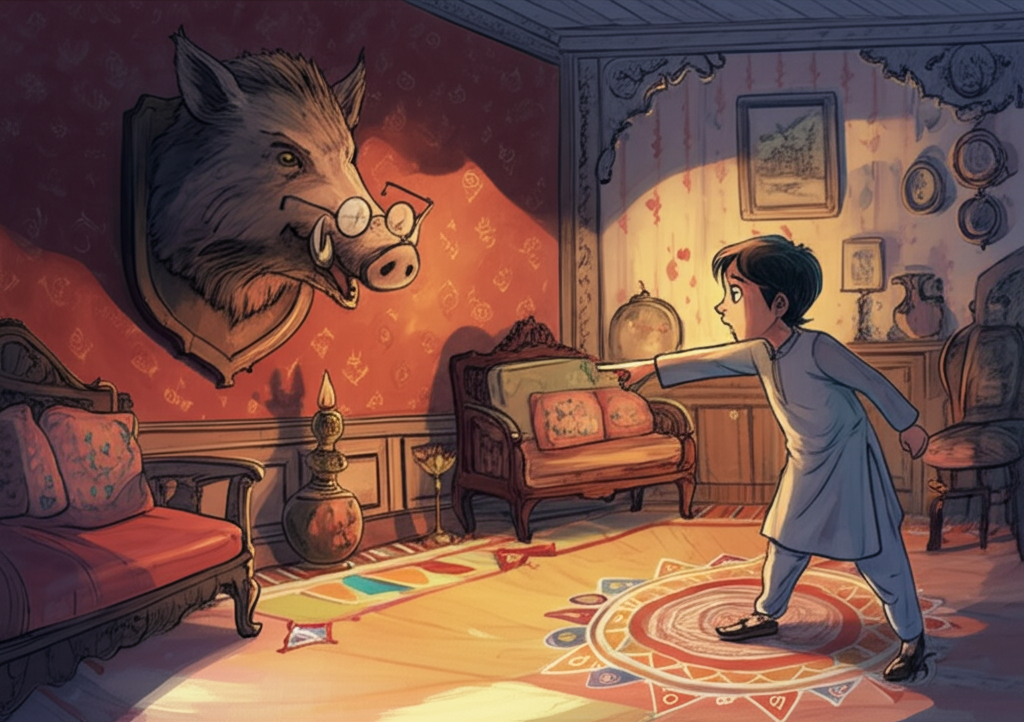
Next, Grandfather was in trouble. He went into the garden one morning and found all his pretty flowers cut off and lying on the ground.
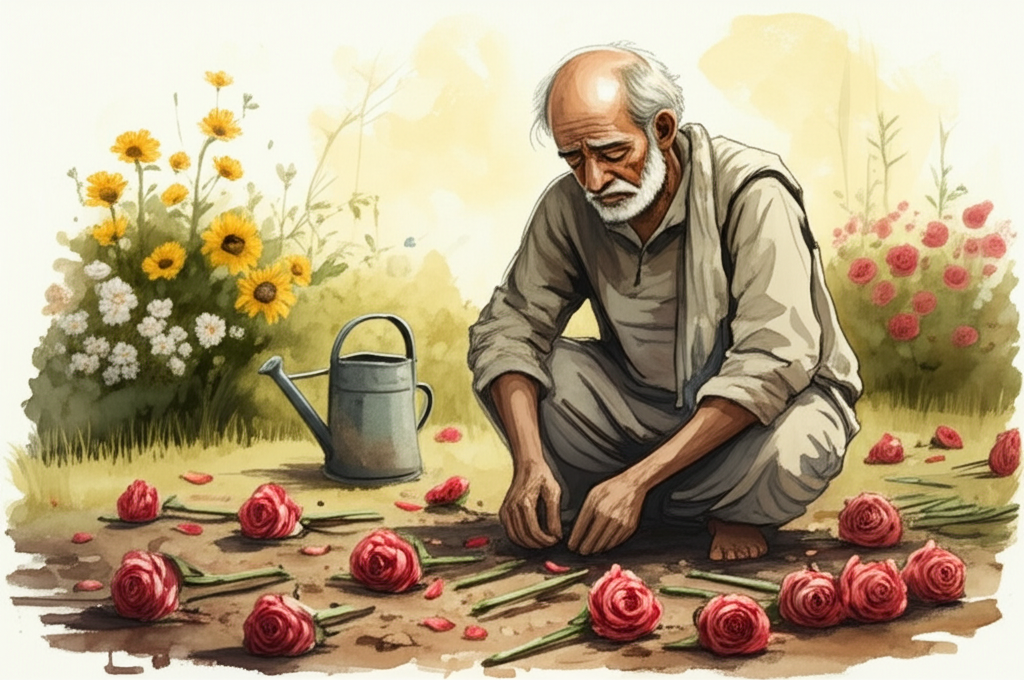
Uncle Ken was next. He slept very soundly, and he hated being woken up. So when he came to breakfast looking grumpy, we asked if he was okay. ‘I couldn’t sleep at all last night!’ he said. ‘Every time I was about to fall asleep, the blankets would be pulled off the bed! I had to get up a lot to pick them up.’ He glared at me. ‘Where were you sleeping last night, young man?’ I had an excuse. ‘In Grandfather’s room,’ I said. ‘That’s right,’ said Grandfather. ‘And I sleep lightly. I would have heard him if he was walking in his sleep.’ ‘It’s that ghost from the peepul tree!’ said Grandmother. ‘He’s moved into the house! First my glasses, then the flowers, and now Ken’s blankets! What will he do next?’ We didn’t have to wait long to find out. Lots of bad things happened. Vases fell off tables, and pictures fell off the walls. Parrot feathers showed up in the tea, and the parrot squawked loudly in the middle of the night. Uncle Ken found a bird’s nest in his bed, and when he threw it out the window, two crows attacked him!
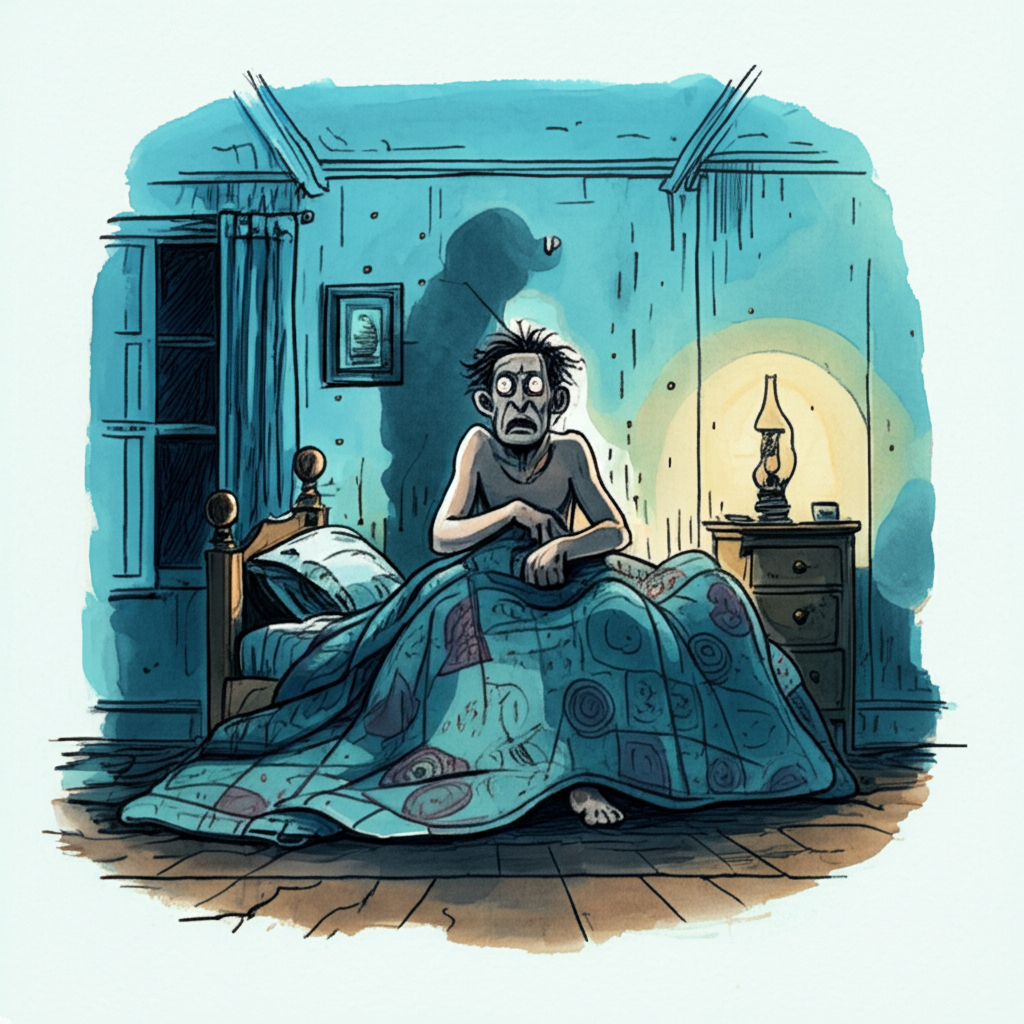
When Aunt Minnie came to visit, things got worse. The ghost seemed to hate Aunt Minnie right away. She was a nervous person, just the kind of person a mean ghost would pick on. Somehow, her toothpaste got switched with Grandfather’s shaving cream. When she came into the living room with foam all over her face, we ran away! Uncle Ken shouted that she had a disease!
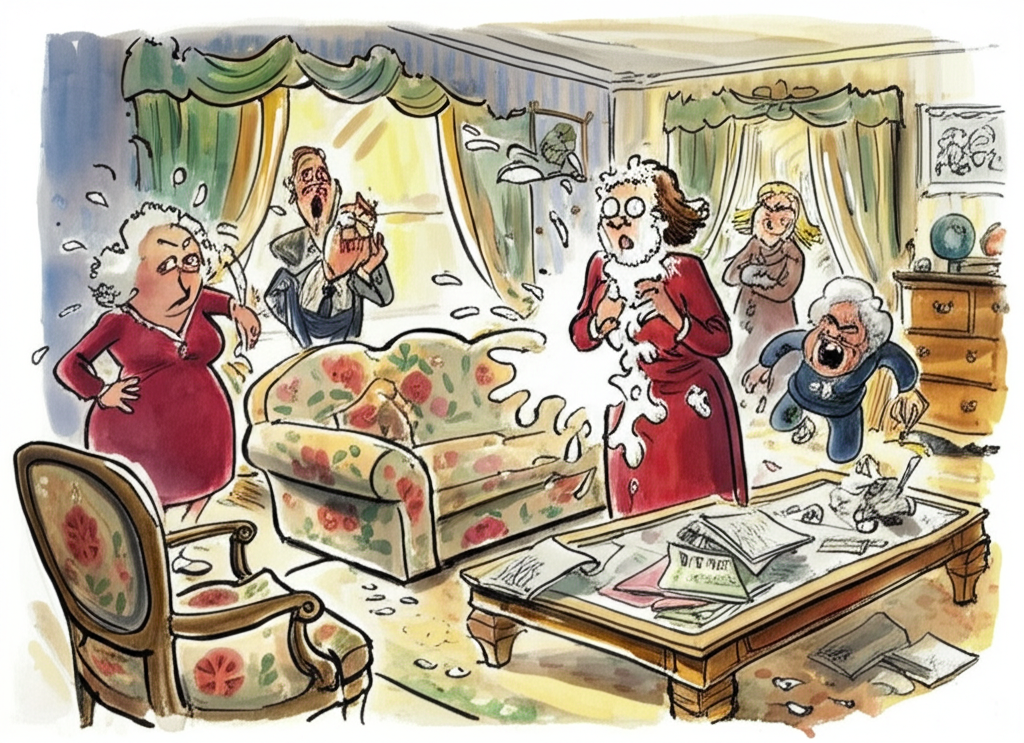
Two days later, Aunt Minnie said she had been hit on the nose by a grapefruit! It had jumped off the shelf in the pantry all by itself and flew across the room right at her! Her nose was red and swollen. Aunt Minnie said her life was calmer somewhere else.
‘We have to leave this house!’ said Grandmother. ‘If we stay here any longer, Ken and Minnie will get really upset.’ ‘I thought Aunt Minnie was already upset,’ I said. ‘Don’t be rude!’ snapped Aunt Minnie. ‘Anyway, I agree we should move,’ I said. ‘I can’t even do my homework. My ink bottle is always empty!’ ‘There was ink in the soup last night,’ said Grandfather.
So, a few days and many problems later, we started moving to a new house. Two carts pulled by cows, filled with furniture and bags, went ahead. The roof of the old car was piled high with bags and kitchen stuff. Everyone squeezed into the car, and Grandfather drove.
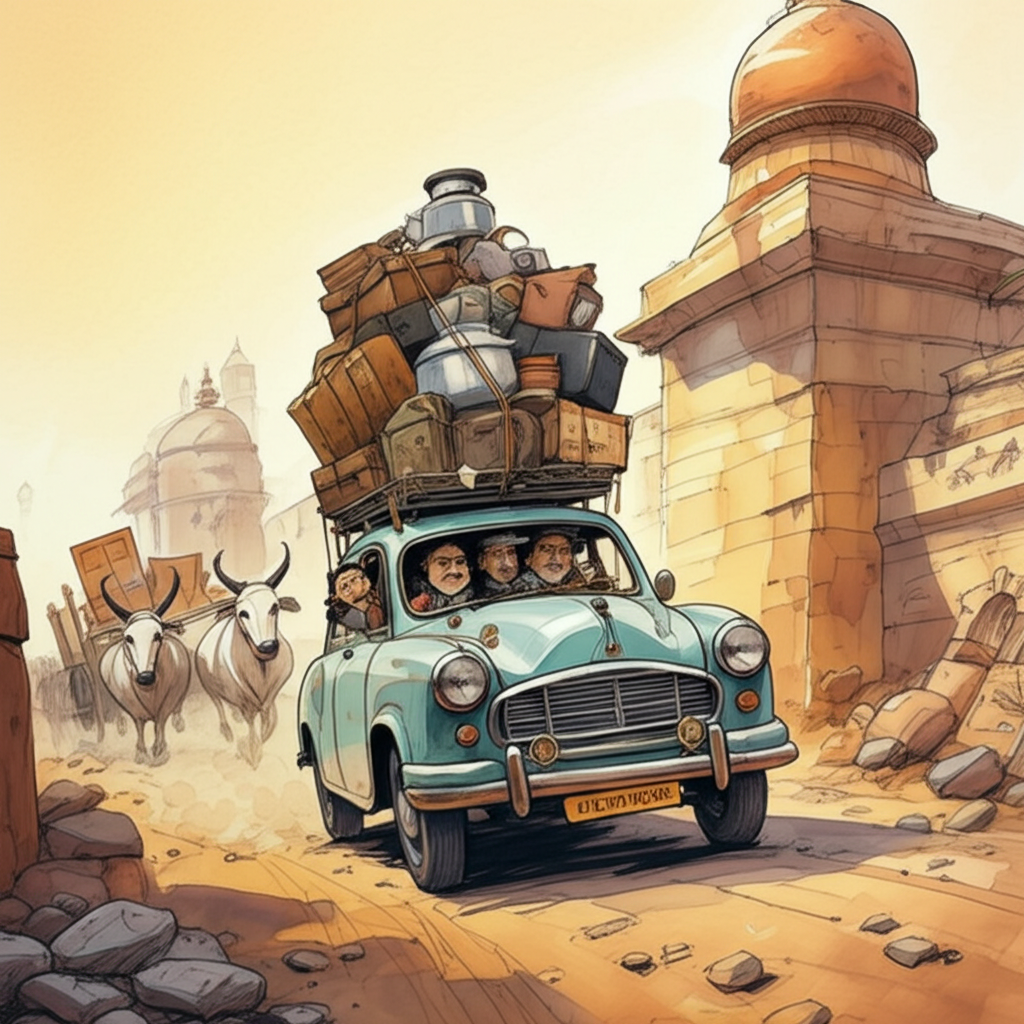
We had just left the gate when we heard a funny sound. It sounded like someone was chuckling and talking to himself on the roof of the car. ‘Is the parrot on top of the car?’ asked Grandfather. ‘No, he’s in his cage on one of the carts,’ said Grandmother.
Grandfather stopped the car, got out, and looked at the roof. ‘Nothing up there,’ he said, getting back in and starting the car. ‘I’m sure I heard the parrot talking.’ Grandfather drove for a while when the chuckling started again, followed by a squeaky little voice. We all heard it. It was the ghost talking to himself. ‘Let’s go, let’s go!’ he squeaked happily. ‘A new house! I can’t wait to see it! This will be so much fun!’
